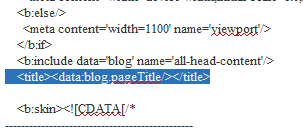Search engine optimization is the process of formatting document
markup and content so that it is more readily understandable for the search
engine. SEO also aims to help improve document
ranking for a set of keywords that may appear on that document. Ultimately
everyone would like to rank at the top of the search results and SEO is a
legitimate approach to making this happen. However, is Instagram also a
legitimate approach? Is it still relevant for SEO?
With the prolific use of these social networking sites, I
think it’s safe to say that they can be relevant on how one use them in SEO. Search engines have been using
social networking signals as a weight to indicate trustworthiness and
relevance. However, in reality, these signals are not really a strong factor in
ranking websites or any page for that matter. Google+ is still considered to be
the only one which has a “direct” impact on Google’s search engine
rankings; although Facebook and Twitter can be a great way to get your content
or page to be indexed.
Image Optimization
However, it doesn’t end there. Sharing your photos are not
enough. You should take advantage of hashtags. Promote pictures with hashtags
coupled with the specified hashtag of your business or company. Hashtags create more exposure for your
brand. They likewise make it simpler for people to locate your products. Most
significant, hashtags can help you increase the quantity of your followers.
Also, making use of keywords to name photos and write captions can, together
with hashtags, make photos more searchable; and eventually, these will also
show up on search engine result pages, which is always a benefit. Leveraging
Instagram photos for image optimization can be yet another way to help with
organic listing.
Instagram might not be as huge as Facebook and Twitter – at
least not just yet. However, businesses are beginning to see this opportunity
as they are now including this photo sharing social networking service in their
search engine marketing campaigns. In the coming years, you can’t doubt that
Instagram is still relevant for SEO.







